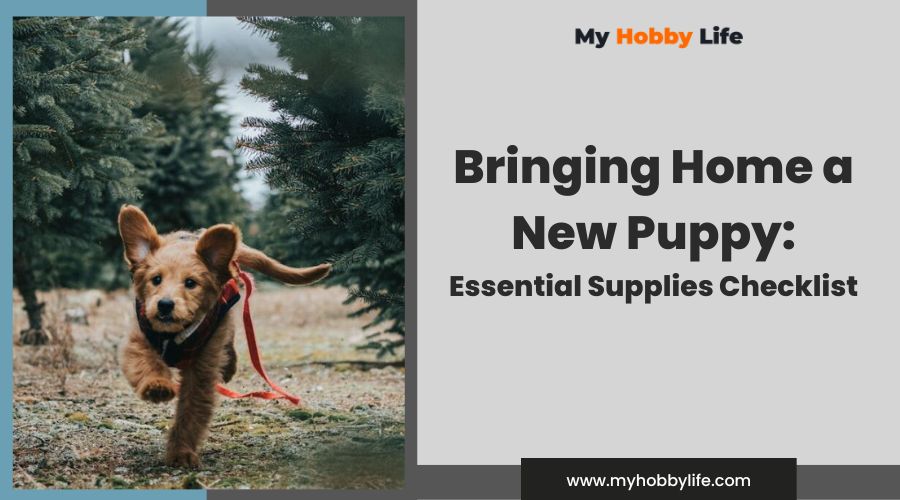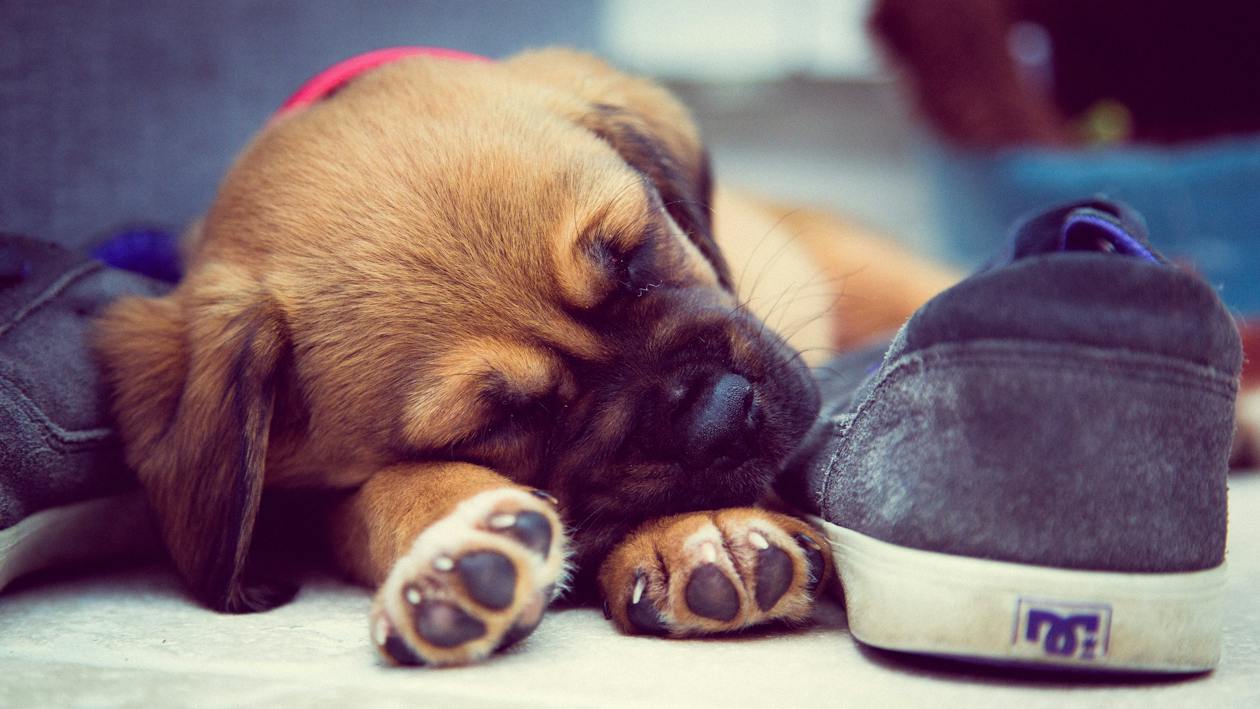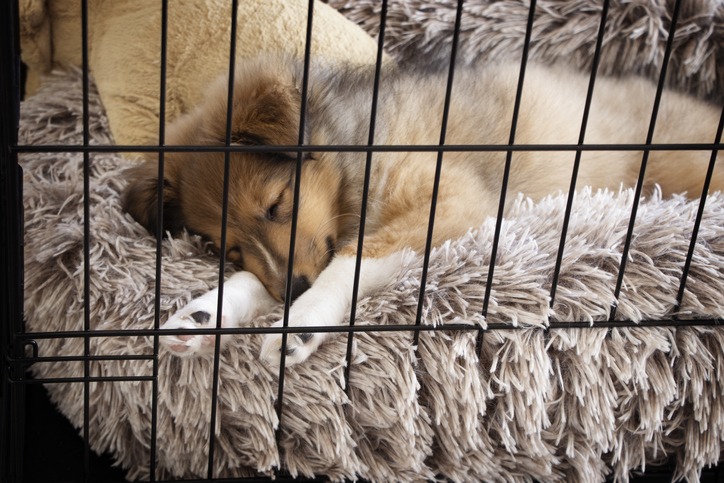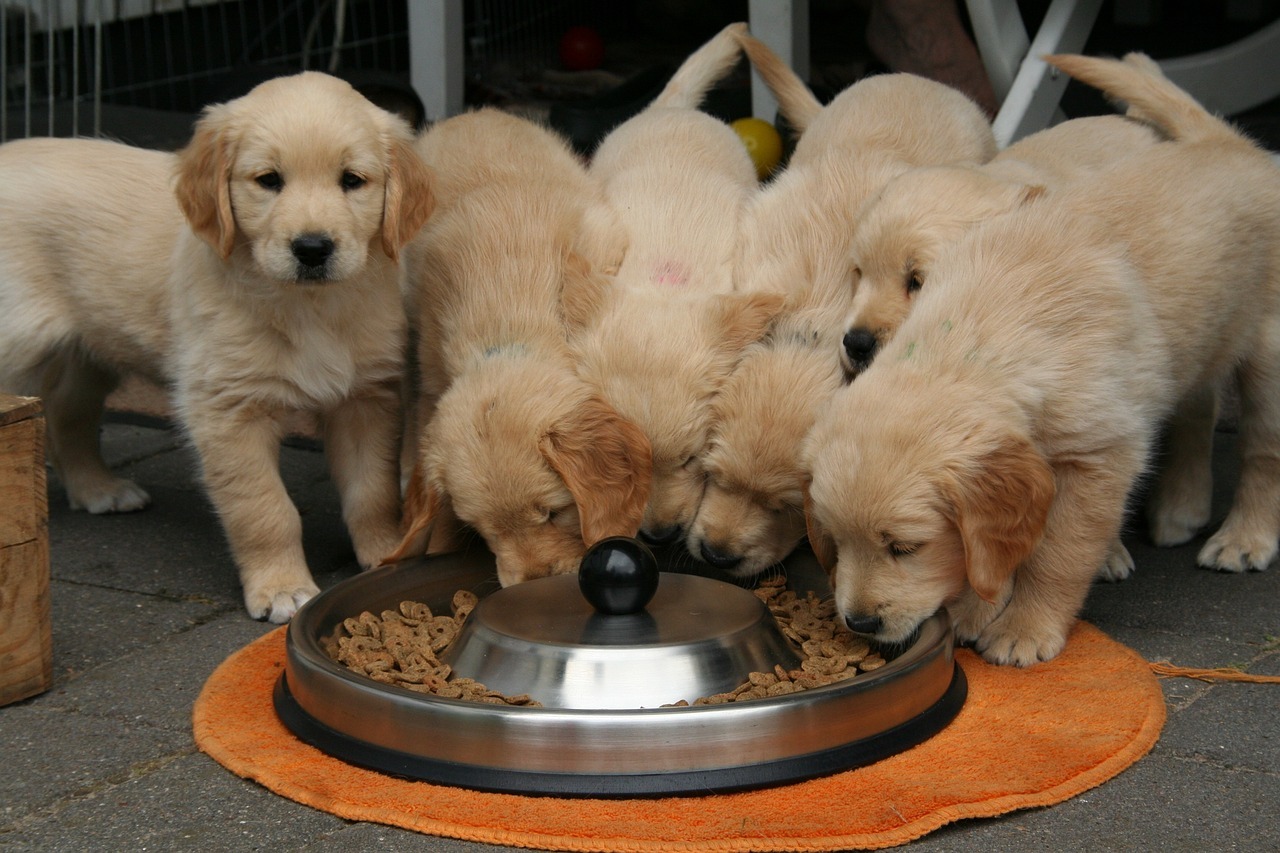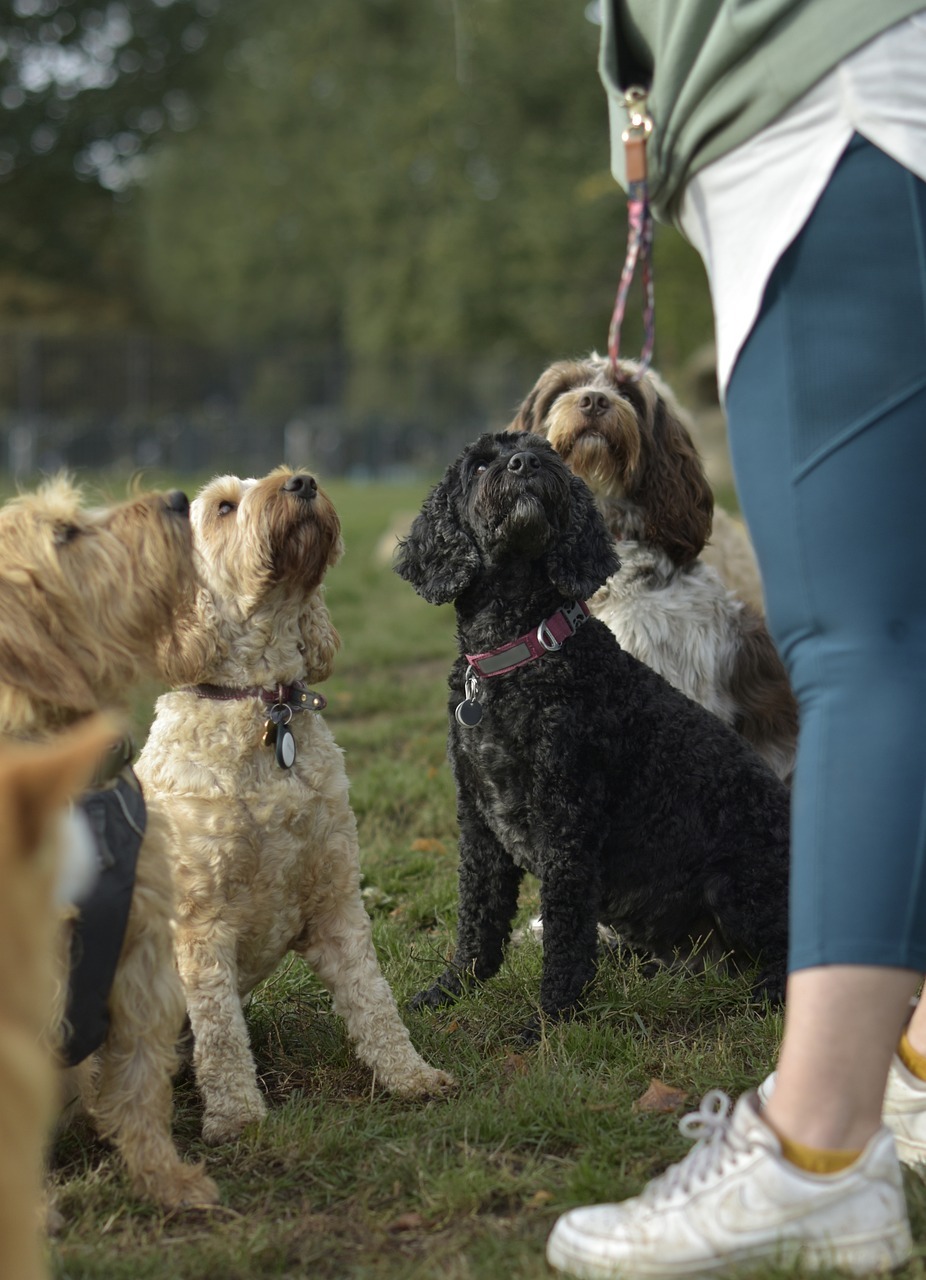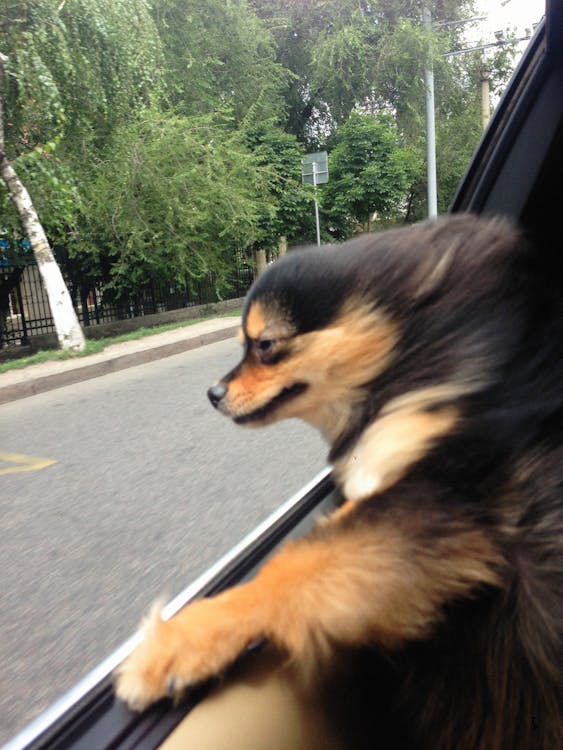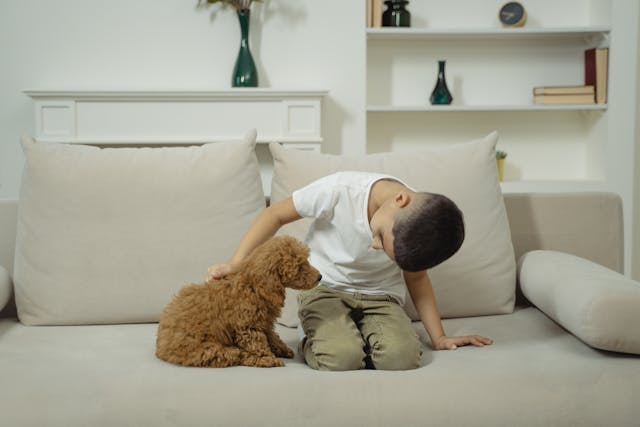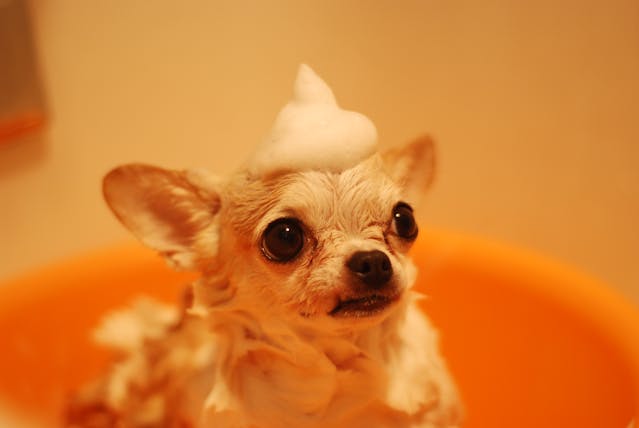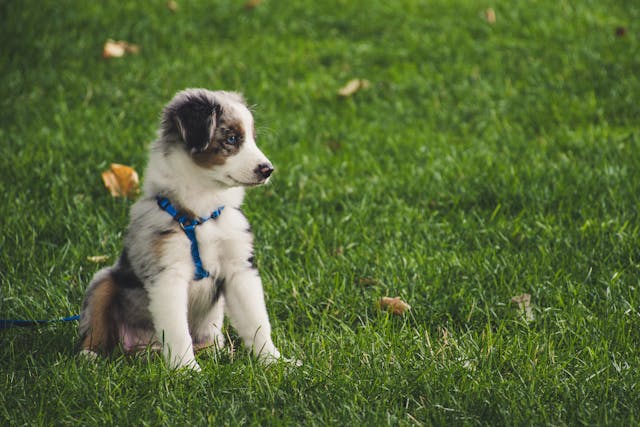Bringing home a new puppy is an exciting time filled with anticipation and joy. It marks the beginning of a new friendship and a lot of responsibilities. As these furry companions are wholly dependent on their human pals, it’s crucial to prepare adequately for their arrival. Careful preparation ensures that they receive the best possible start in their new home, which involves more than just a welcoming hug; it requires the right supplies to cater to their every need.
To create a welcoming environment for a new puppy, certain essential supplies should be on hand before they cross the threshold. First-time dog owners and experienced pet parents alike must remember the indispensables – from a properly sized collar and leash for those first walks together to a comfortable bed and crates for restful sleep. Feeding essentials like bowls and the appropriate puppy food formulated for their developmental stage are also on the top of the list.
In addition to the basics, new canine arrivals will benefit from a range of other items. Chew toys to aid in teething and to keep them engaged, grooming tools to maintain a shiny coat, and puppy pads for house training are all important. Puppy-proofing one’s space to ensure safety and having a stock of cleaning supplies for inevitable messes will make the transition smoother for both the puppy and the owner. With these mindful preparations in place, owners can look forward to the rewarding journey of raising a happy and healthy puppy.
Preparing Your Home
When welcoming a new puppy, ensuring their safety and comfort is paramount. This involves both puppy-proofing your environment and creating a sanctuary for them to feel secure.
Puppy-Proofing Essentials
Puppy-proofing your home is a vital step to prevent your new pet from getting into potentially dangerous situations.
- Remove Hazards:
- Electrical cords: Secure or conceal all cords to prevent chewing.
- Small objects: Clear away items that can be choking hazards.
- Restrict Access:
- Dog Gates: Install gates to limit the puppy’s access to certain areas.
- Poisonous plants: Remove or fence off plants that are toxic to dogs.
- Protect Furnishings:
- Apply bitter sprays on chewable surfaces such as furniture legs.
Setting Up a Safe Space
Creating a designated area for your puppy helps them understand where they can relax and retreat when needed.
- Puppy Crate:
- Size: Choose a crate big enough for your puppy to stand, turn around, and lie down comfortably.
- Bedding: Add comfortable bedding inside the crate.
- Location:
- Select a quiet corner away from heavy traffic to place the crate.
- Supplies:
- Ensure the safe space has a water bowl and age-appropriate toys.
Essential Supplies
When you bring a new puppy home, there are several essential items you’ll need to ensure they have a smooth transition. These items cater to your pup’s basic needs, from a cozy sleeping spot to the right tools for training and behavior management.
Rest & Comfort
Crate: A sturdy dog crate is important for providing a safe space. Choose one that’s large enough for your puppy to grow into.
Bed: Invest in a comfortable dog bed for your puppy to rest and sleep.
Feeding Essentials
Bowls: Durable food and water bowls are crucial. Stainless steel or ceramic options are easy to clean and resist tipping.
Puppy Food: High-quality puppy food is essential for proper development. Select an age-appropriate formula.
Hygiene & Grooming
Toothbrush and Toothpaste: Start dental hygiene early with products designed for dogs.
Shampoo: Puppy-specific shampoo will be gentle on their skin.
Puppy Pads: These are useful for housebreaking and protecting floors.
Training & Behavior
Collar and Leash: A comfortable, adjustable collar and a sturdy leash are must-haves for walks and training.
Training Treats: Positive reinforcement is key; have training treats at hand for rewards.
Accessories: Include items like puppy-proofing supplies to ensure a safe environment for exploration and growth.
Nutrition and Feeding
Proper nutrition is essential for a puppy’s growth and health. Selecting the right food and establishing a consistent feeding schedule are critical steps in raising a healthy puppy.
Choosing the Right Food
When selecting puppy food, it’s important to look for options that are specifically formulated for puppies as they have different nutritional needs compared to adult dogs. They require more protein, fat, calories, and nutrients that support growth. Choose a food that meets the AAFCO nutrient profiles for “growth,” “all life stages,” or that is labeled as a “puppy formula.” Additionally, certain large breed puppies may need specially formulated food to ensure proper development and prevent growth-related issues.
Puppy food should be:
- High in protein: To support muscle development and growth.
- Rich in fat: To provide energy for their active lifestyles.
- Calorie-dense: Puppies need more calories for their body size compared to adult dogs.
- Enriched with essential nutrients: Such as DHA for brain development, calcium, and phosphorus for strong bones.
Feeding Schedule & Routine
A routine feeding schedule helps regulate a puppy’s digestion and establishes a routine. Puppies usually start with four meals a day, and the number of meals can be reduced to three times a day by six months of age, eventually transitioning to twice a day as they approach adulthood.
Example feeding schedule for a puppy:
- 8 weeks old: 4 meals a day.
- 3 months old: 3 meals a day.
- 6 months and older: 2 meals a day.
Remember, a food bowl should be a suitable size for the puppy and remain clean. Stainless steel bowls are often recommended because they’re durable and easy to clean. Elevated feeders may be beneficial to ensure good posture while eating, but consult a vet to see if it’s necessary for your breed. Consistency with feeding times and portion control is also key—always follow the recommended feeding guidelines provided on the puppy food packaging or consult with a veterinarian for specific dietary needs.
Health & Vaccinations
When bringing a new puppy home, prioritizing its health is crucial. A puppy’s immune system is not fully developed, making vaccinations and veterinary care essential for preventing disease.
First Veterinarian Visit
The first veterinarian visit is a cornerstone in a puppy’s health care. It should be scheduled within the first week of bringing the puppy home. This visit allows the vet to conduct a thorough physical examination and assess the puppy’s overall health. They will check for congenital conditions, discuss nutrition, and set a schedule for vaccinations.
Vaccination Schedule
A vaccination schedule is vital for a puppy’s health to prevent serious diseases. A typical schedule is as follows:
| Age | Vaccination |
|---|---|
| 6-8 weeks | Distemper, Parvovirus |
| 10-12 weeks | DHPP (Distemper, Hepatitis, Parvovirus, Parainfluenza), Leptospirosis |
| 16-18 weeks | DHPP, Rabies |
| 12-16 months | DHPP, Rabies |
DHPP: Distemper, Hepatitis, Parainfluenza, and Parvovirus
Boosters are then given at intervals throughout the dog’s life, as recommended by the vet. The veterinarian may also discuss optional vaccinations based on the puppy’s lifestyle and risk factors.
Training & Socialization
Training and socialization are fundamental to a puppy’s development, setting the stage for a well-behaved adult dog. Effective house training, mastering basic commands, and proper socialization are all critical for a puppy to learn appropriate behaviors and adapt to various environments.
House Training
Establishing a routine is vital for successful house training. Owners should designate a specific potty area and take their puppy there regularly, ideally every two hours, as well as after meals and naps. Utilizing training pads can be an effective interim solution, especially for apartment dwellers. Positive reinforcement when the puppy eliminates in the correct area reinforces good behavior.
Basic Commands
Basic commands such as sit, stay, come, and heel are essential for a puppy’s safety and behavior. Employing positive reinforcement like treats or praise can accelerate learning. Consistency in command use is key, and if necessary, a professional dog trainer can be engaged to provide guidance and advanced training techniques.
Socializing Your Puppy
Starting socialization early is crucial for a puppy’s development. Introducing a puppy to a variety of people, places, and experiences helps prevent fear and aggression. Short, positive interactions where a puppy can interact with other vaccinated dogs and strangers will build confidence and good social behavior. It’s important to ensure all experiences are controlled and positive, preventing any overwhelming or negative impacts on the puppy’s development.
Exercise & Play
When considering exercise and play essentials for a new puppy, safety and proper growth should be the top priorities. The right mix of daily exercise routines and interactive playtime contributes to a puppy’s physical health, mental stimulation, and social development.
Daily Exercise Routines
Daily exercise for a puppy should be carefully balanced to avoid overexertion. Puppies need less intense exercise than adult dogs, and their routines should be divided into short, frequent sessions. Leashes and harnesses are crucial for safe outings, and an ID tag ensures the puppy’s identity is known if they wander off.
- Puppy-safe leash: A lightweight leash suited for puppies.
- Comfortable harness: Reduces strain on the puppy’s neck.
- ID tags: Should have the puppy’s name and owner contact information.
Leash training should start early, using a gentle approach to make the puppy comfortable with the leash and harness. Puppy playpens can offer a secure outdoor exercise area where they can explore and play safely.
Interactive Playtime
Interactive playtime strengthens the bond between the puppy and their owner and provides mental stimulation. Play should include a variety of activities and toys that are appropriate for the puppy’s size and strength. Rewards play a critical part in playtime, reinforcing positive behavior and accomplishments.
- Safe toys: Ensure all toys are puppy-safe to avoid choking hazards.
- Reward system: Treats given during playtime encourage good behavior.
Toys that simulate hunting behaviors, such as those that squeak or can be chased, are often a hit with puppies. Owners should always supervise play to prevent any accidents and ensure the puppy does not develop harmful behaviors.
Safety & Comfort During Travel
When bringing a new puppy home, the journey is an important transition. Ensuring your puppy’s safety and comfort during travel is imperative—it sets the stage for a positive start to your new life together.
Travel Gear
The travel gear they select must support the puppy’s safety and comfort. A suitable crate should be spacious enough for the puppy to stand, turn around, and lie down, yet secure enough to prevent injury. It’s often advisable to choose an adjustable crate that can grow with the puppy. Comfort can be enhanced by adding a soft crate mat or blanket that smells like their previous home or littermates.
A sturdy leash and harness are also essential, offering control and security during pit stops. Additionally, secure a proper tag with contact information to the puppy’s collar, ensuring that, in case they slip away, they can be easily identified.
Travel Safety Tips
Safety during travel is not negotiable. A puppy should never be allowed to roam freely in a vehicle as sudden stops can pose serious risks. Instead, they should be confined to their crate or secured with a crash-tested safety harness. It is also recommended to keep the puppy’s travel style in mind, ensuring that the temperature in the vehicle is comfortable and stopping frequently for bathroom and exercise breaks.
Avoid feeding the puppy right before traveling to prevent motion sickness. Familiarize them with the travel gear several days in advance to minimize stress and make the travel experience as seamless as possible.
Handling Teething & Chewers
When puppies are teething, they have an innate need to chew. It’s crucial to provide them with the right tools to satisfy this urge safely and effectively, without damaging property or endangering their health.
Safe Chew Toys
Chew toys must be durable, safe, and appropriately sized for the puppy. Nylabone products are a popular choice because they are designed to withstand a significant amount of chewing. They come in various textures and shapes to keep puppies engaged while also helping to clean teeth and manage plaque and tartar. It’s important to select chew toys that are too large to swallow but still small enough for the puppy to handle comfortably.
- Nylabone Advanced Oral Care: Specifically engineered for dental hygiene.
- Rubber-based toys: Offer resilience and durability.
- Hard rubber toys: Appropriately sized to prevent choking.
Owners should always monitor their puppies with new toys to ensure they remain intact and do not pose a choking hazard.
Teething Solutions
Teething can be uncomfortable for puppies, and they may chew more frequently and aggressively. To help alleviate their discomfort:
- Cold toys and treats: Can soothe sore gums.
- Finger brush: Can be used to gently massage the gums providing relief and promoting dental health.
Owners should also establish appropriate chewing habits early on by guiding the puppy toward suitable chew toys and away from household items. Regular dental check-ups with a veterinarian are advised to ensure good oral health.
Dealing with Accidents & Cleaning
When bringing a new puppy home, one should be prepared for inevitable accidents. Having the right cleaning supplies is crucial to maintaining a clean environment, and employing accident prevention strategies can help minimize the messes.
Cleaning Supplies
One must equip themselves with specific tools to address the mess effectively. For surface accidents, disposable paper products like paper towels are essential for quick clean-up. To tackle stains and odors, an enzyme-based cleaner designed for pet messes should be on hand, as it breaks down waste and neutralizes smells. For the puppy, gentle puppy wipes can help clean their paws and coat. Additionally, here is a concise list of cleaning tools:
- Paper towels: For swiftly handling initial clean-ups.
- Enzyme cleaner: To thoroughly clean and deodorize affected areas.
- Wipes: Specifically formulated for puppies, useful for wiping off paws or small messes.
- Waterproof mats: Placed under food and water bowls to contain spills.
Accident Prevention
Investing in preventive measures like puppy pads can greatly reduce the frequency of accidents. These pads often have raised walls to contain spills and drainage holes to keep the surface dry, which are beneficial features. A mess-proof mat or waterproof tray under the pads can protect the floor beneath. One should consider these products:
- Puppy pads: Absorbent and designed to attract puppies to eliminate in the right place.
- Mess-proof mat: For additional floor protection under puppy pads or bowls.
- Crate with adjustable size: To aid in house training, as a properly sized crate encourages a puppy to hold their bladder.
The combination of reliable cleaning tools and proactive accident prevention tactics provides a robust approach to maintaining cleanliness in the home.
Integrating into the Family
Successfully integrating a new puppy into the family requires careful management of initial interactions and nurturing a strong, positive bond from the outset.
Introductions to Family and Other Pets
When a new puppy enters the home, introductions should be gentle and controlled. Family members must be patient, allowing the puppy to approach them in its own time. For introductions to other pets, especially if there is an existing new pet in the home, one should ensure that all interactions are closely supervised to prevent any negative experiences that could affect their relationship.
- First Meeting: Introduce the puppy to each family member individually to prevent overwhelming it.
- Existing Pets: Keep the new puppy separated at first, allowing scent swapping before face-to-face meetings.
Creating a Bond With Your Puppy
Bonding with a new puppy is crucial for both the puppy and pet parents. Consistency in care and interactions helps foster trust.
- Routine: Establishing a consistent daily routine helps a puppy feel secure and build trust.
- Comfort: A “Best Friends by Sheri Calming Shag Vegan Fur Donut Cuddler” can provide a safe space for the puppy, enhancing the feeling of security.
- Playtime & Training: Regular play and positive reinforcement training strengthen the bond as puppies associate their owners with positive experiences.
Advanced Training Techniques
Incorporating advanced training techniques into a puppy’s routine ensures they not only obey basic commands but also develop the skills to follow more complex instructions. This section explores two pivotal components: Distance Control & Recall and engaging in Professional Training Sessions.
Distance Control & Recall
Training a puppy for distance control involves teaching them to respond to commands even when they are not right next to the owner. A long nylon training leash can be an essential tool during these exercises. It gives the puppy freedom while ensuring the owner maintains control. Recall, the ability to call the dog back from a distance, is a critical safety skill and should be practiced consistently. Owners can start with short distances in a distraction-free environment and gradually increase both the leash length and distractions.
- Start with Short Distances: Begin at a few feet away.
- Gradually Increase: Slowly extend the distance as the puppy succeeds.
- Use a Nylon Training Leash: Useful for safety and control during training.
Professional Training Sessions
Occasionally, professional assistance from a certified dog trainer can be invaluable in advancing a puppy’s training. They can introduce the puppy to complex commands, improve socialization, and correct any behavioral issues. These sessions can take various forms, from group classes to personalized one-on-one training and should match the puppy’s learning pace and behavioral temperament.
- Seek Expertise: A professional trainer tailors the sessions to the puppy’s needs.
- Diverse Training Environments: Professionals can provide a range of social and environmental training settings.
- Assess Progress: A trainer can offer insights into the puppy’s development and suggest adjustments.
Dog Grooming Essentials
Proper grooming is essential for a puppy’s health and wellbeing. Particular attention should be given to brushing and bathing routines along with maintaining dental health, using the right products and tools to promote hygiene and comfort.
Brushing and Bathing
When bringing home a new puppy, owners should have the necessary supplies for brushing and bathing. For brushing, a high-quality brush suited to the puppy’s coat type is essential, which can help reduce shedding and prevent matting. In terms of bathing, a puppy-specific shampoo is recommended, as it is typically formulated to be gentle on their sensitive skin. Look for hypoallergenic or PH-balanced options if the puppy has particularly sensitive skin. Additionally, a safety lock is a useful feature for shampoo bottles to prevent spills or accidental ingestion.
- Brushing Supplies:
- A soft-bristle brush or a de-shedding tool depending on the puppy’s fur
- Bathing Supplies:
- Puppy-formulated dog shampoo
- Bathing wipes for spot cleaning
Maintaining Dental Health
The dental health of a puppy can affect its overall health, making it crucial to begin dental care early on. A dog toothbrush and dog toothpaste should be used regularly to clean the puppy’s teeth and reduce the risk of dental problems. Toothpaste should be specifically made for dogs, often flavored like chicken or beef to appeal to them. Never use human toothpaste, as it can be harmful to dogs. Start a dental care routine early so the puppy becomes accustomed to having its teeth brushed, which can also help in bonding with the pet.
- Dental Care Supplies:
- Dog toothbrush with soft bristles
- Dog toothpaste (ensuring it is safe for dogs)
- Dental chews or toys to help reduce plaque and tartar build-up
Remember, consistency in grooming routines helps puppies get used to the process and leads to better overall health.
Personalizing Your Dog’s Accessories
Personalizing your puppy’s accessories can enhance their comfort and reflect their unique personality. From the style and fit to the individual details, customized gear can make your dog stand out and feel special.
Choosing the Right Collar and Leash
When selecting a dog collar, owners should consider both function and style. A collar should fit comfortably around the dog’s neck, with enough space to fit two fingers between the collar and the dog’s skin to avoid choking or discomfort. Collars come in various materials:
- Nylon: Durable and available in multiple colors and patterns.
- Leather: Sturdy and can gain character with age.
- Neoprene: Suitable for dogs who frequently swim, as it’s waterproof and quick to dry.
The dog leash should complement the collar in both style and function. Owners may choose a matching leash, or opt for a contrasting design to make a statement. Leash types include:
- Standard leashes: Good for basic training and everyday use.
- Retractable leashes: Offer more freedom for the dog to explore safely.
- Adjustable leashes: Allow length changes based on the environment or training needs.
Customizing Dog Tags
A dog’s ID tag is critical for their safety and serves as a quick way for someone to contact the owner if the dog is lost. Personalizing dog tags can involve engraving with stylish fonts and adding fun designs or symbols. Essential information on the ID tag should include:
- The dog’s name.
- The owner’s contact number.
- Any medical information if necessary.
Additionally, owners can choose tags that reflect their dog’s personality, such as bone-shaped tags for a playful pup or a simple, elegant tag for a more dignified canine. Many vendors offer custom design options online, allowing for a personalized accessory that is both functional and reflective of the dog’s character.
Frequently Asked Questions
Bringing a new puppy home can be as daunting as it is exciting. This section answers some common questions to ensure a smooth transition for the puppy into its new environment.
What essentials should I include on my new puppy shopping list?
A new puppy will need a comfortable bed, food and water bowls, a suitable puppy food, a leash, a collar with ID tags, chew toys, and training treats. It’s also wise to include grooming supplies, puppy pads, and a crate for training and security.
How should I prepare for my puppy’s first journey home in the car?
One should ensure the car ride is safe and comfortable by using a well-ventilated crate or carrier. It’s helpful to bring along a blanket or a toy from the puppy’s previous home to provide familiarity and comfort. Also, plan for frequent bathroom breaks and ensure the puppy is secure when the vehicle is in motion.
What are the must-have items for a puppy’s first 48 hours at home?
In the initial 48 hours, a puppy requires a food and water bowl, puppy-specific food, a designated sleeping area with a cozy bed, and access to a designated bathroom spot with puppy pads or an outdoor area. Chew toys and a few comforts like a blanket can help mitigate stress.
Which supplies are recommended for a new puppy’s sleeping area?
The sleeping area should have a comfortable bed that fits the puppy’s size, a blanket, and a crate if crate training is part of the plan. The crate should be large enough for the puppy to stand, turn around, and lie down comfortably but not so large that they might relieve themselves in one corner.
What items should I have ready before my puppy first sets paw in my home?
It is important to puppy-proof the area where they will spend most of their time. Remove any toxic plants, secure electrical cords, and ensure small objects that could be swallowed are out of reach. Have a water bowl available and designate an appropriate elimination area.
What necessities should I bring when collecting my puppy from the breeder?
When collecting a puppy from the breeder, bring a collar and leash for safety, a comfortable carrier or crate for transport, and a soft blanket or toy to comfort them. It’s also prudent to have water and a bowl, as well as puppy pads, for any potential clean-ups needed during the journey.
